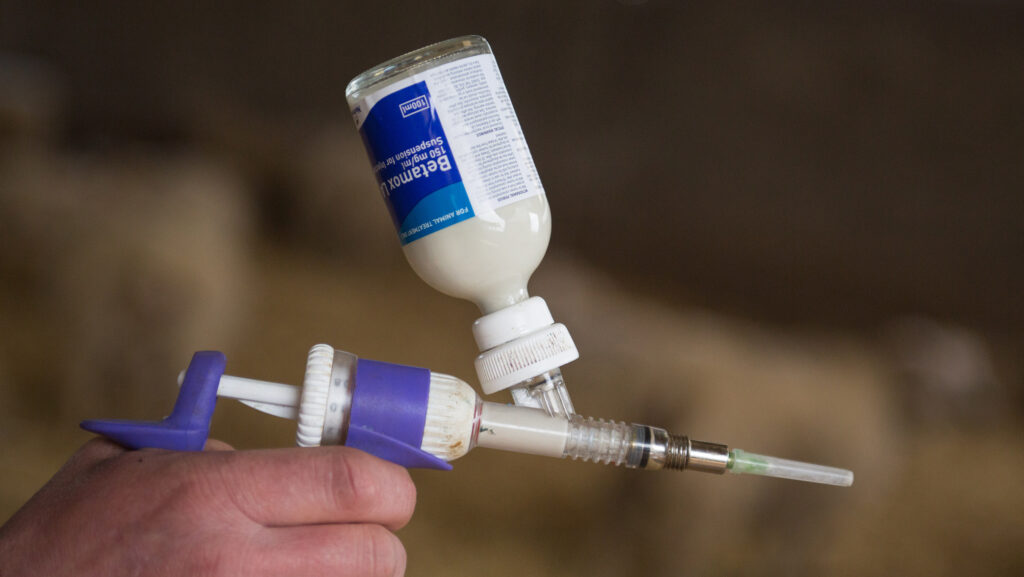Farm use of antibiotics hits record low in the UK
 © Tim Scrivener
© Tim Scrivener Sales of veterinary antibiotics have fallen to their lowest levels on record, according to research from the Veterinary Medicines Directorate (VMD) and the Animal and Plant Health Agency (Apha).
An industry-wide push has led to antibiotics use on farm declining considerably throughout the past decade, with sales falling by 57% since 2014.
The overall quantity of antibiotics sold for all animals in 2024 was 194t, representing an annual decrease of 3%.
See also: Manx farmers face loss of major livestock vet
The Veterinary Antimicrobial Resistance and Sales Surveillance (VARRS) Report, published on 18 November, shows the UK remains one of the lowest users of veterinary antibiotics in Europe.
The industry has broadly welcomed the news, hailing the development as positive for public health, food security, and the economy, though there has been some call for further action, with variable results between sectors.
Defra biosecurity and animal welfare minister Baroness Hayman said:
“Through combined efforts across government and industry we continue to make progress in reducing the use of antibiotics in animals, which is vital for public and animal health.”
British Veterinary Association president Rob Williams said:
“Retaining the effectiveness of antibiotics is vital to ensuring both animal and human health, and while it’s great to see overall sales for livestock at an all-time low, we mustn’t get complacent.
“We’re encouraging and supporting vet professionals to work closely with farmers to keep driving usage down, so these important medicines remain viable for the future.”
Poultry sector
Antibiotics usage in the broiler sector saw an annual decline of 16% to 4.7 mg/kg in 2024, while usage in laying hens had a very small increase.
The British Egg Industry Council (BEIC) says this relates to a single course of treatment administered to a breeder flock.
Richard Griffiths, chief executive of the British Poultry Council, said: “This year’s report confirms the poultrymeat sector’s long-standing commitment to safeguarding the effectiveness of our antibiotics.
“We were the first sector to voluntarily develop a strategy for responsible use, and since 2012 we have seen an 83% reduction in total antibiotics use and a 99% reduction in the use of critically important antibiotics.”
Pork sector progress
Antibiotics use in the pork sector increased by 2% in 2024 compared to year-earlier levels, to 50mg/kg.
However, it continues to be well below historic levels.
Cóilín Nunan, policy and science manager at the Alliance to Save Our Antibiotics, said:
“Antibiotics use in UK pigs is up by 19% since 2022, and use per pig is now about five times higher than in Sweden, and 20 or 30 times higher than in British organic pigs.
“So clearly much more can be done.
“New legislation introduced last year makes it illegal to use antibiotics to compensate for poor hygiene and inadequate animal husbandry.
“And yet we know that most farm antibiotics use is still occurring to treat diseases caused by intensive farming systems.
“High stocking densities in pig and poultry farming, early weaning of piglets, routine tail docking of piglets, and the use of very fast-growing breeds of broiler chickens, are all linked with higher levels of antibiotics use.”
The National Pig Association (NPA) said rising usage reflected increased disease pressure, the loss of zinc oxide and vaccine supply issues.
NPA chief policy adviser Katie Jarvis stressed the long-term progress, noting a 69% fall in use since 2015.
She added: “Antibiotics usage will fluctuate as the sector continues to use as little as possible, but as much as necessary… The pig sector remains committed to a continued reduction in antibiotics use.”
New targets
The Responsible Use of Medicines in Agriculture (Ruma) Alliance is due to publish its five-year targets for the farming sector on 26 November.
Ruma chief executive Cat McLaughlin said the VARSS and Ruma Agriculture Targets Task Force reports show sustained commitment across the livestock sectors and significant long-term reductions in farm antibiotics use over the past decade.
But she stressed that despite the recent plateau in progress, farmers must still be able to use antibiotics “when it is appropriate to do so – right time, right place, right situation”.
